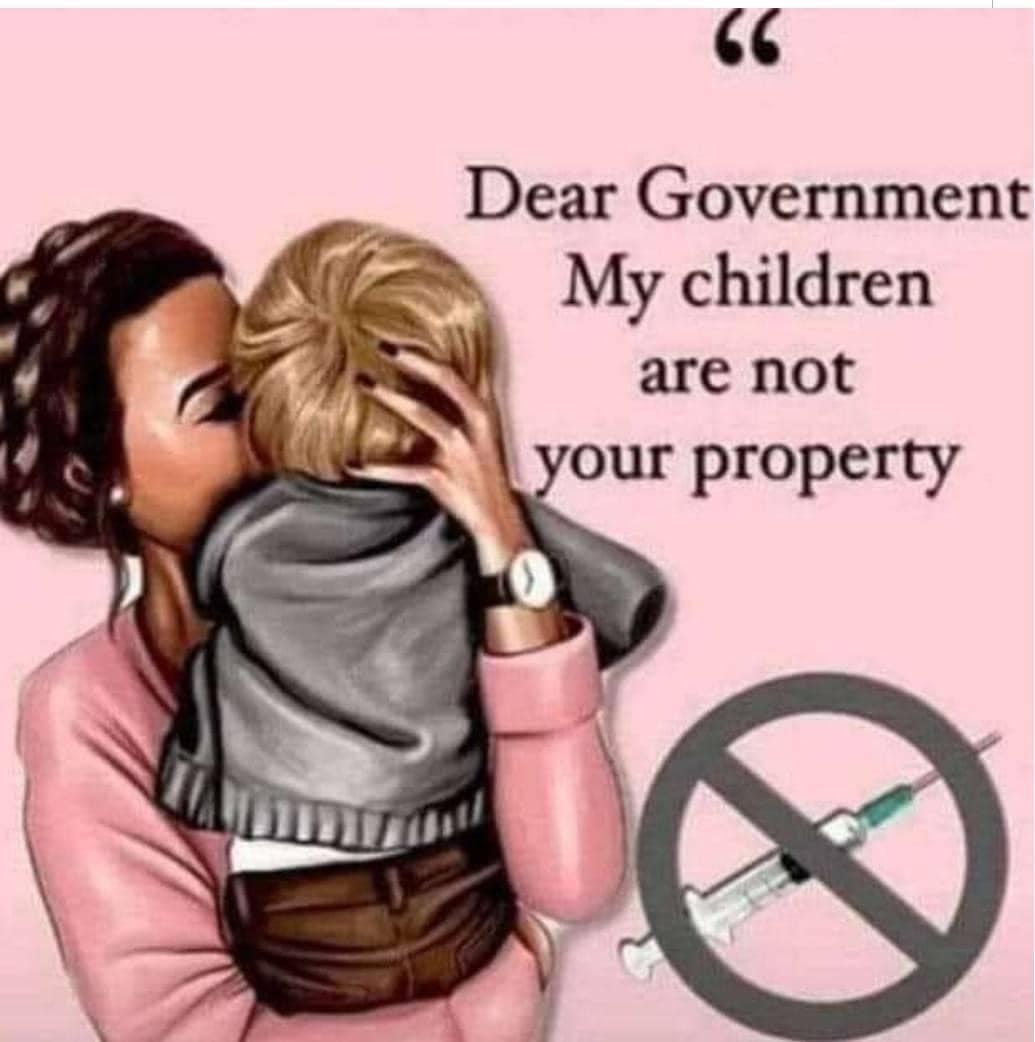
WAKE UP NZ VAERS IS A PASSIVE REPORTING SYSTEM FOR ADVERSE EVENTS ‘COVID-19 JABS’
VAERS is a passive reporting system, (meaning it relies on individuals to send in reports of their experiences to CDC and FDA). Passive surveillance of adverse events following immunization (AEFI) is a spontaneous reporting system, affected by under-reporting limitations (Carol Sakey)
ORIGINAL RESEARCH: FREQUENCY & ASSOCIATIONS OF ADVERSE REACTIONS OF COVID-19 VACCINES REPORTED IN THE EUROPEAN UNION AND THE US. 3rd February 2022 – Sec. Infectious Diseases – Surveillance, Prevention and Treatment. (Department Of Population- Based Medicine. Institute of Health Sciences, University of Tubingen, Germany)
This study aims to provide a risk assessment of the adverse reactions related to COVID19 vax’s manufactured by AstraZeneca, Janssen, Moderna and Pfizer BioNTech which have been in used since Dec 2020 and Oct 2021 in the European Union and the US.
Data from the European Database of Suspected Adverse Drug Reaction (EudraVigliance) and the Vaccine Averse Events Reporting System (VAERS) FROM 2020 TO October 2021 as analysed. There were more than 7.8 millions adverse reaction of about 1.6 millions persons are included in the study. The COVID19 Vax Adverse reaction was compared to the adverse reaction to the influenza vaccine exposures.
There was a higher risk of reporting serious adverse reactions for COVID 19 Vax’s in comparison to influenza vaccines. Individuals over the age of 65years were associated with a nigher frequency of death, hospitalisation and life threatening reactions than younger individuals. The onset of serious adverse reactions occurred within the first 7 days after vaccination in 77.6 -89.1% of cases. The largest risks observed were allergic, constitutional reactions, dermatological, gastrointestinal, neurological reactions. The largest relative risks between COVID19 vs Influenza vaccines observed were allergic reactions, arrhythmia, general cardiovasula events, coagulation, haemorrages, gastrointestinal;, ocular, sexual organs reactions and thrombosis.
CLASSIFICATION OF ADVERSE REACTIONS: There is different MedDRA Coding levels used in VAERS and EudraVigiliance therefore allow a relatively detailed description in particular medical conditions mentioned in the reports. It is necessary to take into account the different biological pathways linking vaccine expose and adverse reaction. The medical conditions coded in VAERS are classified in 17 event categories following the Common Toxicity Criteria (CTC) developed by the National Cancer Institute in the US, this is one of the oldest and most common used classification systems of adverse reactions in clinical trials
STATISICAL ANALYSIS: One of the major drawbacks of spontaneous reports of adverse reactions is the fact that the calculation of risk differences needed in causal influence is not straightforward due to under or over reporting of adverse reactions, uncertaintities regarding to the number of individuals exposed to the vaccines. In the case of COV ID19 vax programmes in the EU and US risk estimators of adverse reactions for the COVID19 vs Influenza vaccines, namely the number of individuals exposed to the COVID19 vaccines and the age distribution are known and used as the denominator to calculate the risk estimates for COVID19 vaccines
COVID-19 vaccines are associated with higher absolute risks of serious adverse outcomes in comparison to influenza vaccines used in 2020 and 2021. In comparison of the reported adverse reaction reported across vaccine types it suggests a substantial agreement between reporting between EudraVigilance and VAERS studies, with dyspnoea, respiratory arrest, pulmonary embolism, myocardial infarction, thrombosis, cerebral haemorrhages, and pneumonia being the adverse reactions most frequently mentioned in the death reports.
The risk estimates of adverse reactions by vaccine type and CTC category were largest for the Pfizer-BioNTech vaccine in both EudraVigilance and VAERS, followed by the vaccines of AstraZeneca and Moderna. mRNA and chimeric virus vaccines were obtained from pre-clinical trials assessing their effects in treatment of various cancer types such as melanoma, renal cancer, prostrate cancer, leukaemia, lung cancer. Previous research concerning the use of nucleic-acid based technology, in particular for the mRNA platform is much more limited. Only previous research on cancer immunotherapy, the spike S protein of SARS-COV-2 and the nanoparticles, the biological plausibility of the adverse reactions following COVID19 vaccination can be summarized by the action of at least three major pathophysiological mechanisms.
mRNA USED FOR IMMOTHERAPY FOR CANCER: First of all the strong immune responses must be the feature of both cancer immunotherapy and prophylactic vaccination, since their effect is basically due to the building up of a specific antigen-antibody production targeting the destruction of tumour cells in cancer immunotherapy and the induction of immunisation against viral infections in prophylactic vaccination, respectively.
Hence the nucleic-acid-based pharmaceutical technology on which the COVID-19 vaccines are based upon elicits potent immune responses via Toll-like receptos (TLR), interleukins (IL) IL-6, IL-12, interferon type 1 (IFN-1), tumour necrosis factor α (TNFα), pattern recognition receptors, dendritic cell maturation, induction of CD4+ and CD8+ T cell responses, among others At the same time, however, such potent immune reactions may also increase the risks of pathophysiological mechanisms related, for instance, to tissue and organ lesions and thromboembolic events
At least for the adenovirus-vector technology, results from clinical trials indicated that adenovirus proteins may elicit acute-phase immune responses involving the release of IL-6 and TNFα and activation of innate immunity cells such as mast cells and neutrophils . In some instances, this may result in an increased likelihood of an acute shock-syndrome due to a cytokine cascade leading to disseminated intravascular coagulation, acute respiratory distress and multiorgan failure . In addition, by mechanisms which have not been fully explained so far, the pro-inflammatory environment related to the interactions between nucleic acids, TNFα, matured dendritic cells (DC) and the receptors TLR3 and TLR7 has been associated with disease progression of autoimmune diseases such as lupus erythematosus and rheumatoid arthritis
Despite the advances made in the reduction of the pro inflammatory risks of mRNA and vectorised pharmaceutical platforms, the induction of severe immune induced reactions such as thrombocytopenia and human erythrocyte agglutination has been previously documented with adenovirus-vectorised therapies . The present investigation suggests that all four nucleic-acid-based COVID-19 vaccines are associated with increased risks of thromboembolic events
Endotheliopathy and Coagulopathy had been observed also for all types of COVID-19 vaccines . ( Endotheliopathy, or endothelial dysfunction, is emerging as an important pathological feature in COVID-19. Transmission electron microscopy of blood vessels from autopsy specimens from patients with COVID-19 has revealed the presence of endothelial cell damage and apoptosis) (Coagulopathy (also called a bleeding disorder) is a condition in which the blood’s ability to coagulate (form clots) is impaired.)
From this perspective it is reported that recently proposed vaccine induced immune thrombotic (VITT) maybe actually be a severe manifestation in a continuum of vaccine induced coagulopathy affecting vaccinated individuals. In particular the high frequency of adverse reactions following COVID19 vaccines than for influenza vaccines
The pathogenicity of the Spike -S of SARS-COV-2 which has been involved in the endotheliopathy and coagulopathy(as described above) . The spike S protein, expressed in both nucleic acid technologies of the COVID-19 vaccines reviewed here, is not only a potent activator which may contribute to endothelial damage, but also an enhancer of platelet aggregation and thrombus formation . In addition, the spike subunit S1 can cross the blood-brain barrier and is taken up by the neural cells, the lung, liver, kidney and spleen Hence, it is likely that the cleaved spike protein subunit in itself has the ability to cross other types of blood endothelial barriers surrounding immune privileged organs such as the spinal cord, ovaries, testes, pregnant uterus, placenta, and eyes , potentially inducing innate immune responses.
Moreover, whereas adenovirus serotype 5 have been found to cross the blood brain barrier in the murine model, the nanolipid-complexed mRNA vaccine platform is optimised to diffuse across non-fenestrated endothelial blood barriers and, thus, due to the immune responses mentioned above, both vaccine platforms may induce in some cases a pro-inflammatory environment in the immune privileged organs. To some extent, this pathophysiological pathway involving transduction across blood barriers and subsequent immune response may partly explain some of the neurological and inflammatory reactions reported to VAERS and EudraVigilance affecting the central nervous system and the sexual organs.
Concerning the mRNA platform, a third pathway is related to the role of the lipid nanoparticles themselves used to complex the naked synthetic mRNA. Even though there have been advances to reduce the immunostimulation of lipid nanoparticles (e.g., by increasing the density of polyethylene glycol in the lipid nanoparticles , they still may elicit pathogenic anaphylactoid reactions by complement activation and enhanced platelet aggregation (An anaphylactoid reaction is a severe, potentially life threatening allergic reaction, it can occur in minutes of expose )
The Nanoparticle realted adverse reactions may contribute to the pro inflamatory host responses and consequently increase risks of thromboembolic or anaphylactoid outcomes. In particular, the complexed mRNA will tend to bio-accumulate in the adrenal and seminal vesicle wall, liver and spleen due to the normal lipid metabolism, bloodstream distribution and the permeability of the fenestrated endothelium to the lipid nanoparticles and, hence, these organs may become target organs of toxicity (72, 73). In fact, previous pharmacokinetic findings on the biodistribution of nanolipid, encapsulated nucleic-acid drugs revealed that the nanolipid vehicle prevents the nucleic-acid from being metabolised and, thus, blood and plasma concentrations of the nucleic-acid components are determined by the pharmacokinetics of the nanolipid vehicle ( Thromboembolism is the name for when a blood clot (thrombus) that forms in a blood vessel breaks loose, is carried by the bloodstream, and blocks another blood vessel. This is a dangerous condition that can affect multiple organs, causing organ damage and even death. As such, it requires immediate treatment.)
The adverse reactions commonly mentioned in the death reports such as pulmonary embolism, thrombosis, cerebral haemorrhage, myocardial infarction, cerebral venous sinus thrombosis are in agreement with the findings of previous autopsy studies which have identified several causal mechanisms linking COVID-19 vaccination and a lethal outcome. Of particular importance are strong immune-related life-threatening conditions involving antibody-mediated platelet activation in VITT cases (platelet factor 4) neutrophil and histiocyte infiltrates in myocarditis (and reactive astrocytes, microglia, and foamy macrophaghes in cases of acute disseminated encephalomyelitis (neuro-inflammation)
As for the deaths, hospitalisation of those people over 65 years of age as to COVID19 Vaccines, these age-dependent alterations of the inflammatory response, vascular function and haemostasis may pre-dispose older individuals to an exacerbated inflammatory response, thrombus formation and endotheliopathy following COVID-19 vaccination which ultimately lead to the increased frequency of lethal outcomes, hospitalisations and life-threatening reactions among older individuals.
STRATEGIES AND LIMITATIONS: Major strengths of this study is the availability of the number of individuals exposed to the new COV ID19 and Influenza Vaccines in the US and EU populations during 2020 and 2021, allowing a more accurate reporting of adverse reactions. COVID19 Vaccine exposures 451 million as opposed to 437 influenza vaccine exposures, and the populations are practically the same in 2020 and 2021 (ie., almost the same individuals and demographic structure)Also varying sensitivity of the passive reporting systems can be ruled out as a major explanatory factor of the frequency observed.
This is an important strength of the present study in view of the rapidly increasing vaccine coverage rates against SARS-CoV-2 which will limit the availability of appropriate control groups made up of individuals without COVID-19 vaccine exposure. In addition, the present analyses are based on some of the largest datasets publicly available worldwide on vaccine-related adverse reactions containing approximately 7.8 million adverse reactions of 1.6 million individuals.
FUTURE RESEARCH: The results of the present investigation in this study may provide avenues for future clinical research in several area’s, whereas passive or spontaneous reporting systems suffer from serious under-estimation of adverse reactions. This is important as it is a drawback as to the magnitude of under-reporting of non serious and serious adverse reactions . Spontaneous report systems has been estimated to lie in the range
Finally, the results of the present investigation may provide avenues for future clinical research on several areas. First, passive or spontaneous report systems suffer from serious under-estimation of adverse reactions. This is an important drawback, as the magnitude of under-reporting of non-serious and serious adverse reactions to spontaneous report systems . It cannot be ruled out that the reporting rates of COVID19 vaccines may be to some extent much higher than for influenza vaccines because of the major limitations of passive reporting systems, under reporting rather than over reporting.
VAERS is a passive reporting system, meaning it relies on individuals to send in reports of their experiences to CDC and FDA. Passive surveillance of adverse events following immunization (AEFI) is a spontaneous reporting system, affected by under-reporting limitations. https://academic.oup.com/eurpub/article/25/suppl_3/ckv175.042/2578461
It is noted that future research should assess the magnitude of under estimation and coverage of adverse reactions in VAERS in order to obtain more accurate risk estimates. At the same time, additional autopsy studies may clarify the pathogenic mechanism potentially accounting for the reported death cases and/ or life threatening conditioning as to COVID19 vaccines.
In the present investigation a higher risk of reporting serious adverse outcomes was observed for the COVID-19 vaccines in comparison to influenza vaccines deployed during 2020 and 2021. Individuals age 65 and older were associated with a higher frequency of death, hospitalisations, and life-threatening reactions than individuals age 18–64 years .
The largest relative risks between COVID-19 vs. influenza vaccines were observed for allergic reactions, arrhythmia, general cardiovascular events, coagulation, haemorrhages, constitutional, gastrointestinal, ocular, sexual organs reactions, and, in particular, thromboembolic events. Further clinical investigations are needed to identify both specific and common biological pathophysiological mechanisms across the different vaccine platforms, and to assess the relative safety between the different COVID-19 vaccines currently being deployed.
Funding and publishing of this study is by Open Access Publishing Fund of University of Tubingen, Germany. The author declares that the research was conducted in the absence of any commercial or financial relationships that could be construed as a potential conflict of interest.
https://www.frontiersin.org/articles/10.3389/fpubh.2021.756633/full
Data Availability Statement
Data of Eudra Vigilance are publicly available as CSV files at https://www.adrreports.eu/ under the line listings view of the corresponding vaccine type. Data on vaccination coverage in the EU are available at https://www.ecdc.europa.eu/en/publications-data/data-covid-19-vaccination-eu-eea (download 26.10.2021). Data on population for the EU are available from Eurostat’s database at https://ec.europa.eu/eurostat/web/main/data/database in the table population on 1 January by age, sex and educational attainment level (demo_pjanedu). Data on US vaccination coverage are available at https://data.cdc.gov/Vaccinations/COVID-19-Vaccinations-in-the-United-States-Jurisdi/unsk-b7fc (download 27.10.2021). Data of VAERS are publicly available as ZIP files for each reporting year at https://vaers.hhs.gov/data.html. Data on US annual resident population by age groups from 2010 to 2019 are available from the US Census Bureau at https://www.census.gov/en.html (table NC-EST2019).
The Supplementary Material for this article can be found online at: https://www.frontiersin.org/articles/10.3389/fpubh.2021.756633/full#supplementary-material
REFERENCES:
- Food and Drug Administration. Pfizer-BioNTech COVID-19 Vaccine Emergency Use Authorization. Silver Spring: US Department of Health and Human Services, Food and Drug Administration, 2020.
- Food and Drug Administration. Moderna COVID-19 Vaccine Emergency Use Authorization. Silver Spring: US Department of Health and Human Services, Food and Drug Administration, 2020.
- Commission E. Commission Implementing Decision of 6.1.2021 Granting a Conditional Marketing Authorisation Under Regulation (EC) No 726/2004 of the European Parliament and of the Council for “COVID-19 Vaccine Moderna – COVID-19 mRNA Vaccine (Nucleoside Modified),” a Medicinal Product for Human Use. Brussels: European Commission, 2021.
- Commission E. Commission Implementing Decision of 21.12.2020 Granting a Conditional Marketing Authorisation Under Regulation (EC) No 726/2004 of the European Parliament and of the Council for “Comirnaty – COVID-19 mRNA Vaccine (Nucleoside Modified),” a Medicinal Product for Human Use. Brussels: European Commission, 2020.
-
-
Sunday - August 28, 2022 - ADVERSE REACTION TO COVID 19
(9)





Leave a Comment